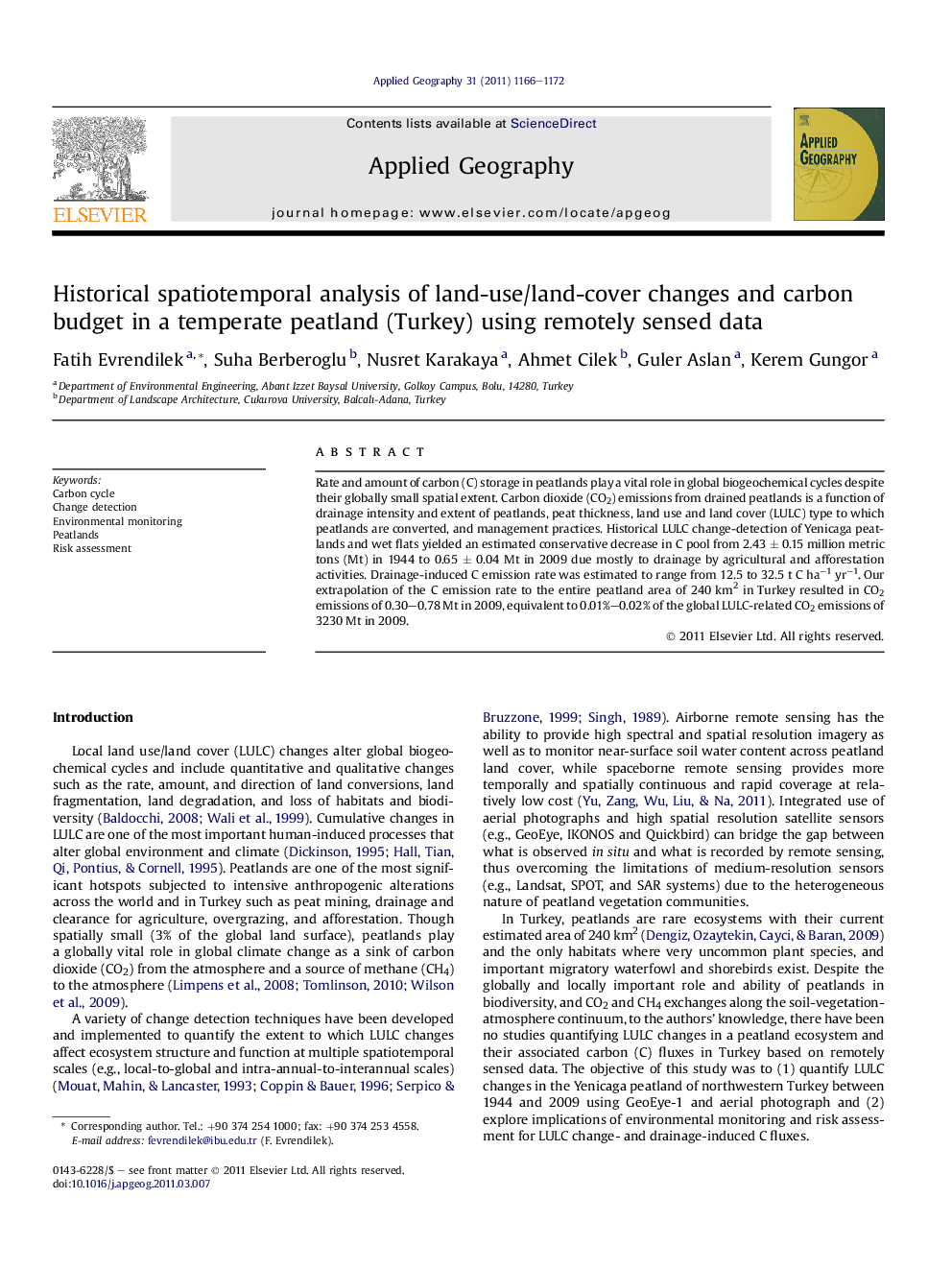| کد مقاله | کد نشریه | سال انتشار | مقاله انگلیسی | نسخه تمام متن |
|---|---|---|---|---|
| 83644 | 158728 | 2011 | 7 صفحه PDF | دانلود رایگان |

Rate and amount of carbon (C) storage in peatlands play a vital role in global biogeochemical cycles despite their globally small spatial extent. Carbon dioxide (CO2) emissions from drained peatlands is a function of drainage intensity and extent of peatlands, peat thickness, land use and land cover (LULC) type to which peatlands are converted, and management practices. Historical LULC change-detection of Yenicaga peatlands and wet flats yielded an estimated conservative decrease in C pool from 2.43 ± 0.15 million metric tons (Mt) in 1944 to 0.65 ± 0.04 Mt in 2009 due mostly to drainage by agricultural and afforestation activities. Drainage-induced C emission rate was estimated to range from 12.5 to 32.5 t C ha−1 yr−1. Our extrapolation of the C emission rate to the entire peatland area of 240 km2 in Turkey resulted in CO2 emissions of 0.30–0.78 Mt in 2009, equivalent to 0.01%–0.02% of the global LULC-related CO2 emissions of 3230 Mt in 2009.
► Demonstrated the benefit of spatiotemporal detection of land use/land cover changes for quantification of carbon dynamics.
► Integrated airborne and spaceborne remote sensing and field measurements for change detection.
► Compared historical changes in peatlands and wet flats between 1944 and 2009.
► Quantified carbon emissions from drained peatlands locally and nationally for the first time in Turkey.
Journal: Applied Geography - Volume 31, Issue 3, July 2011, Pages 1166–1172